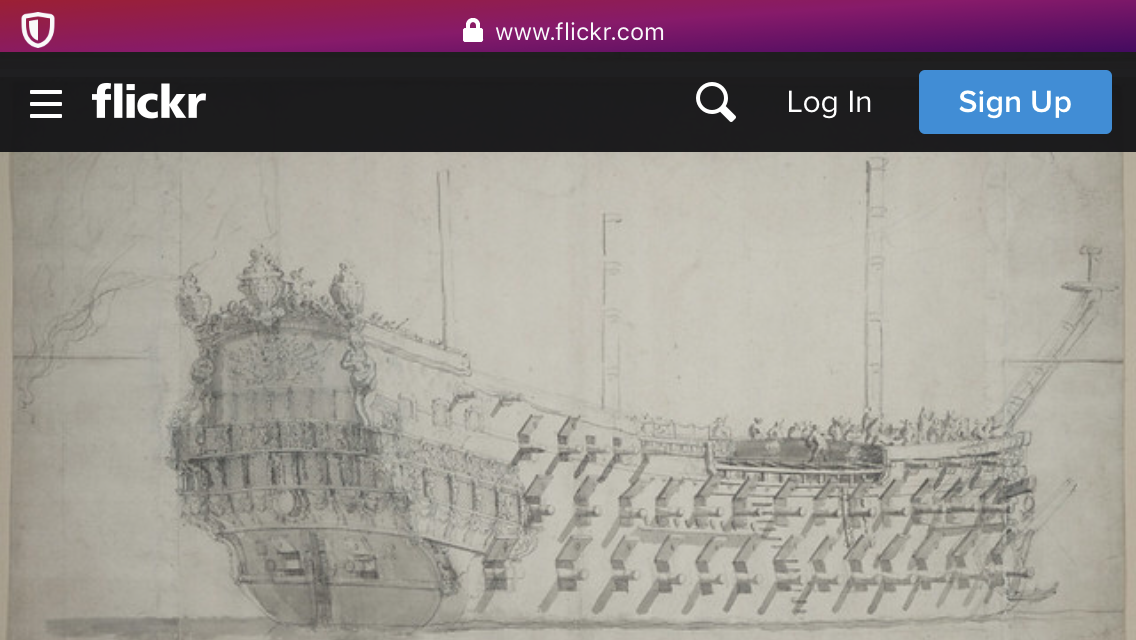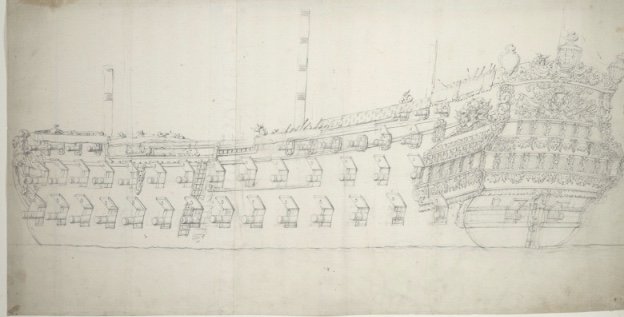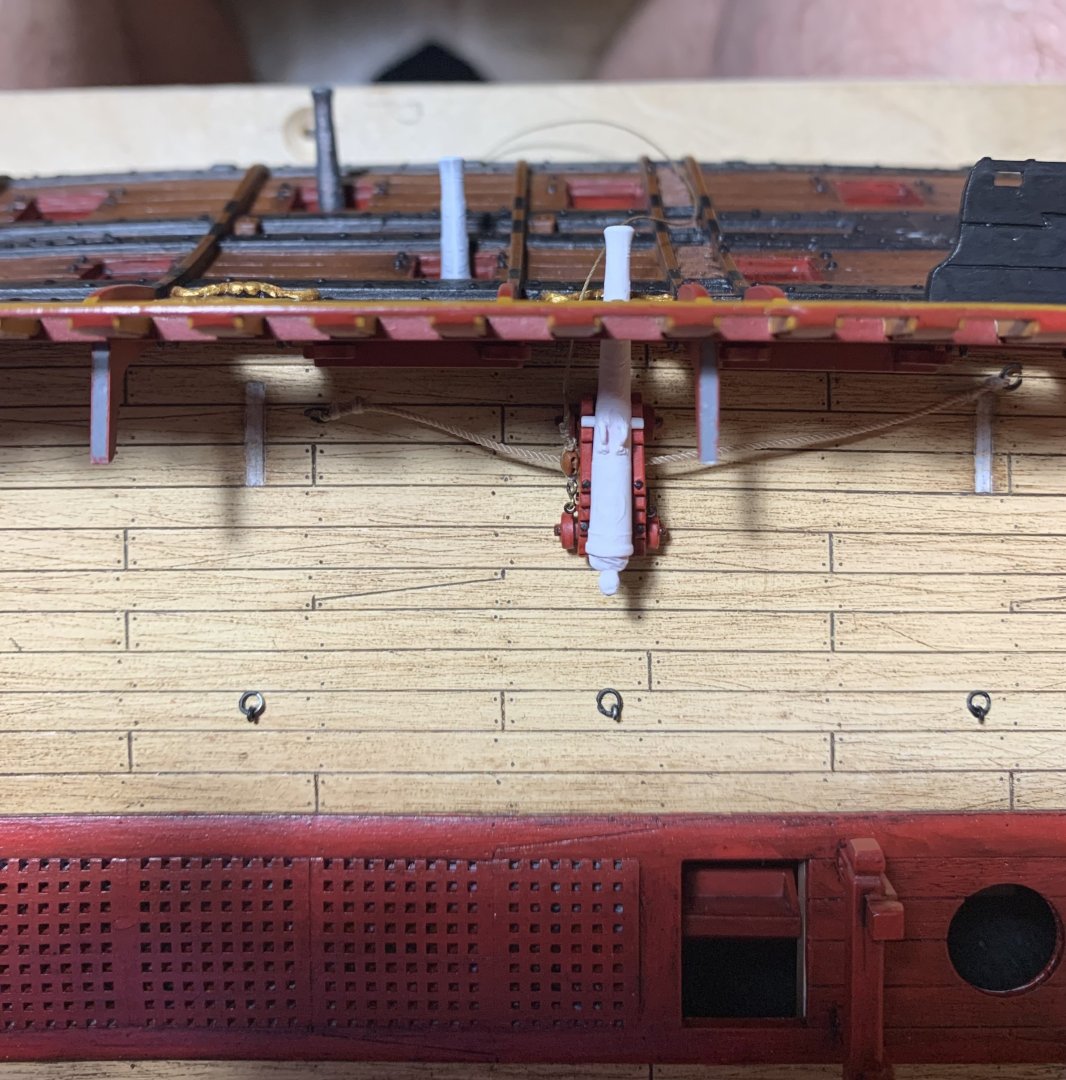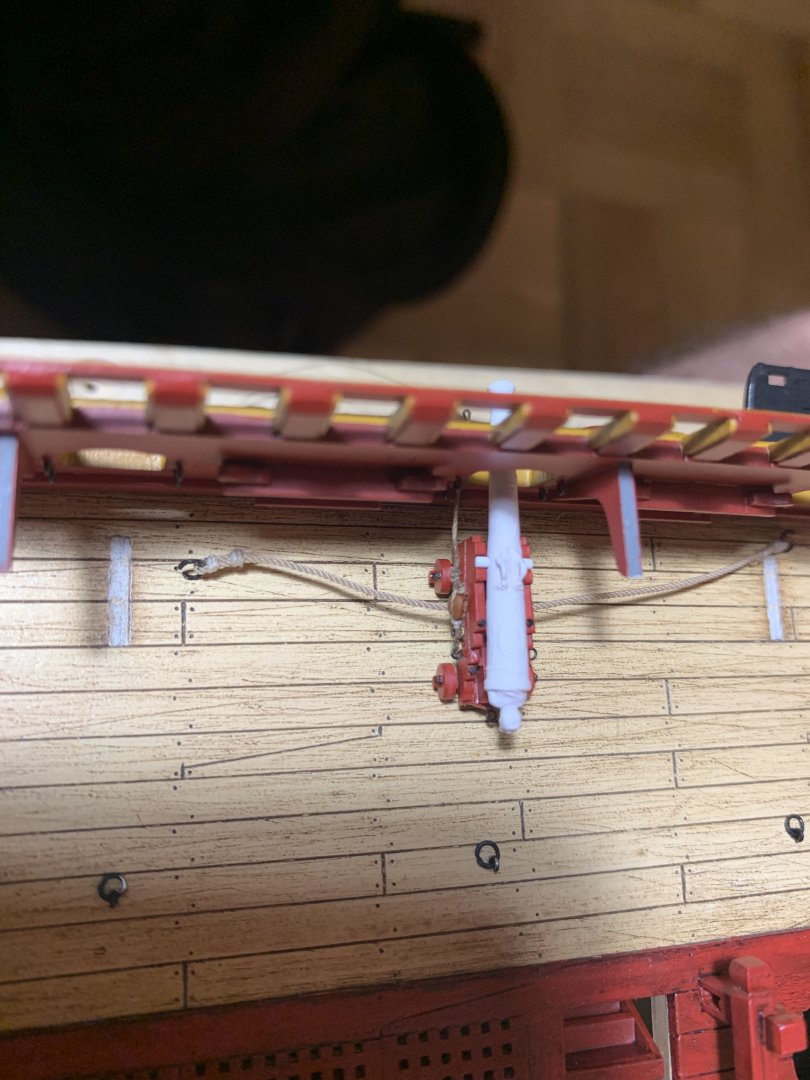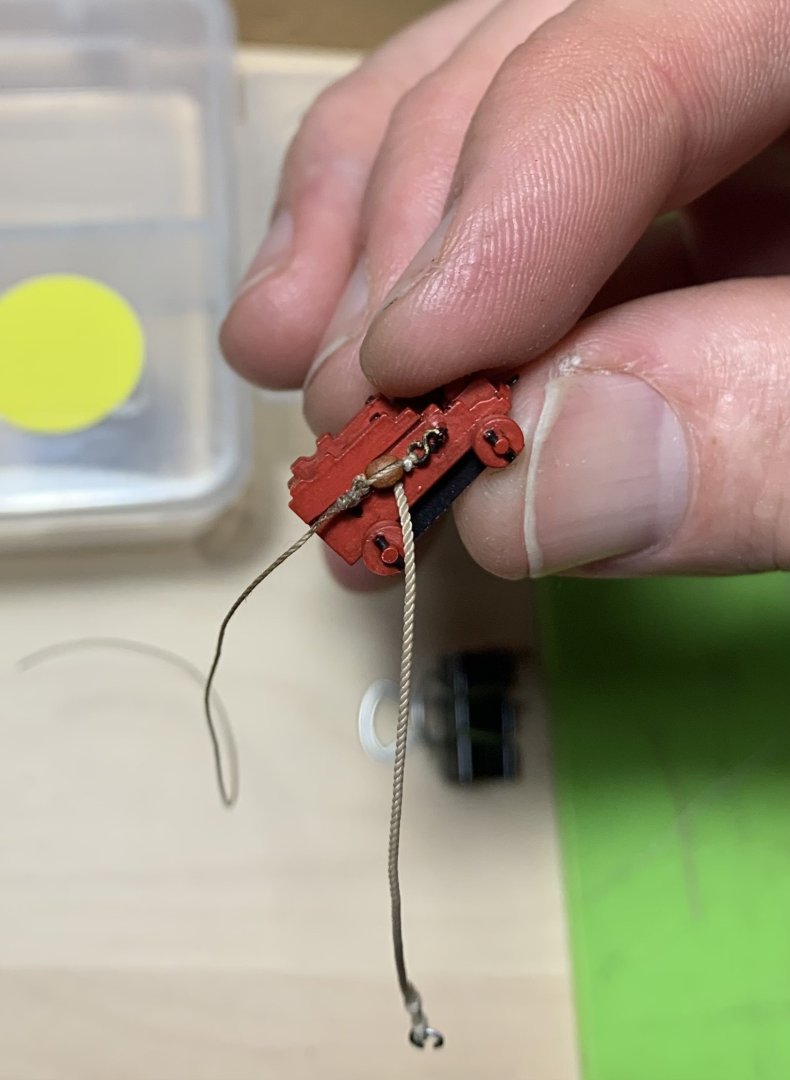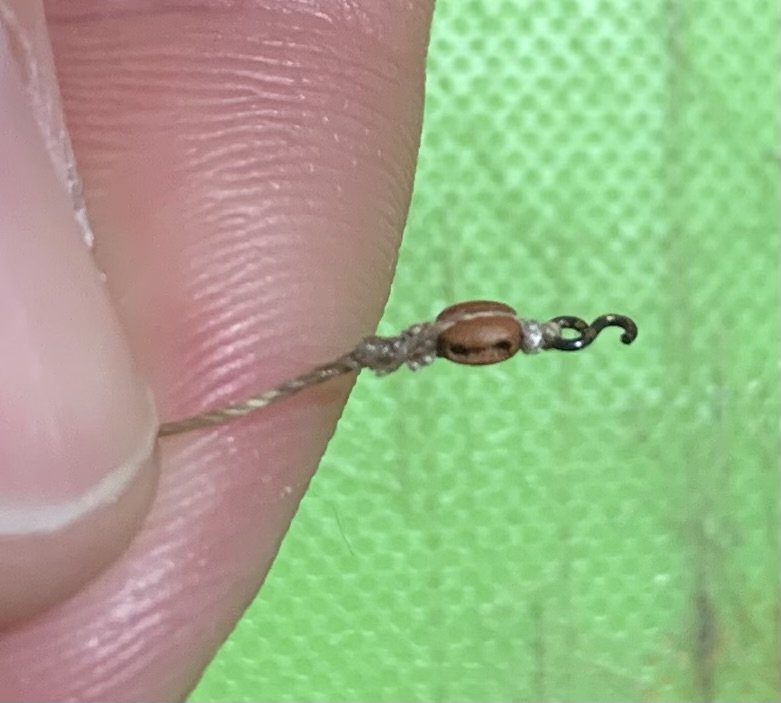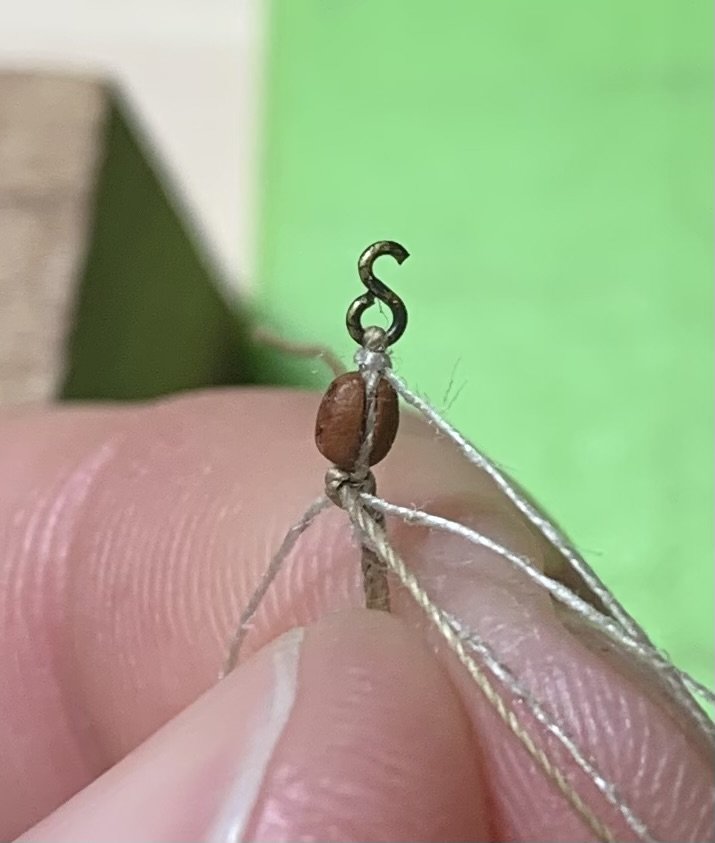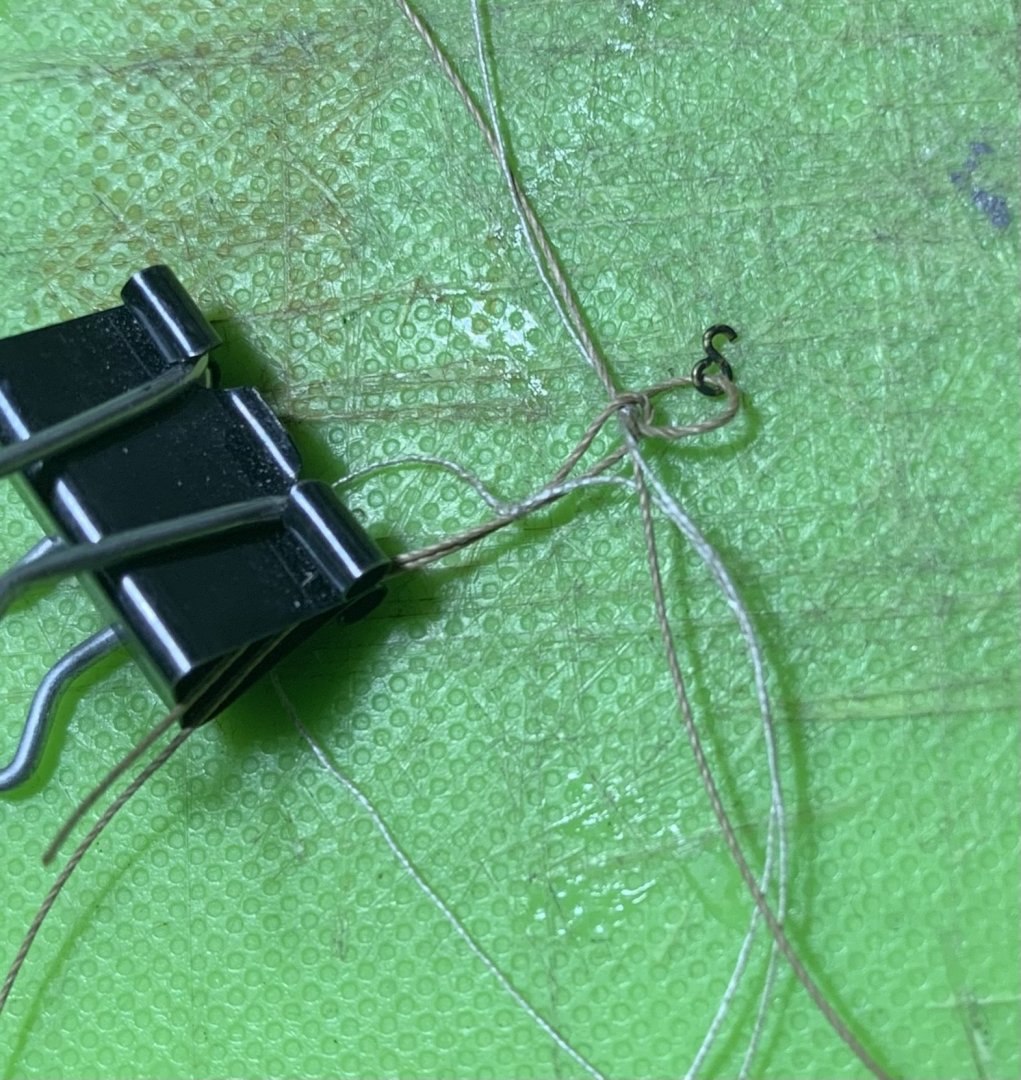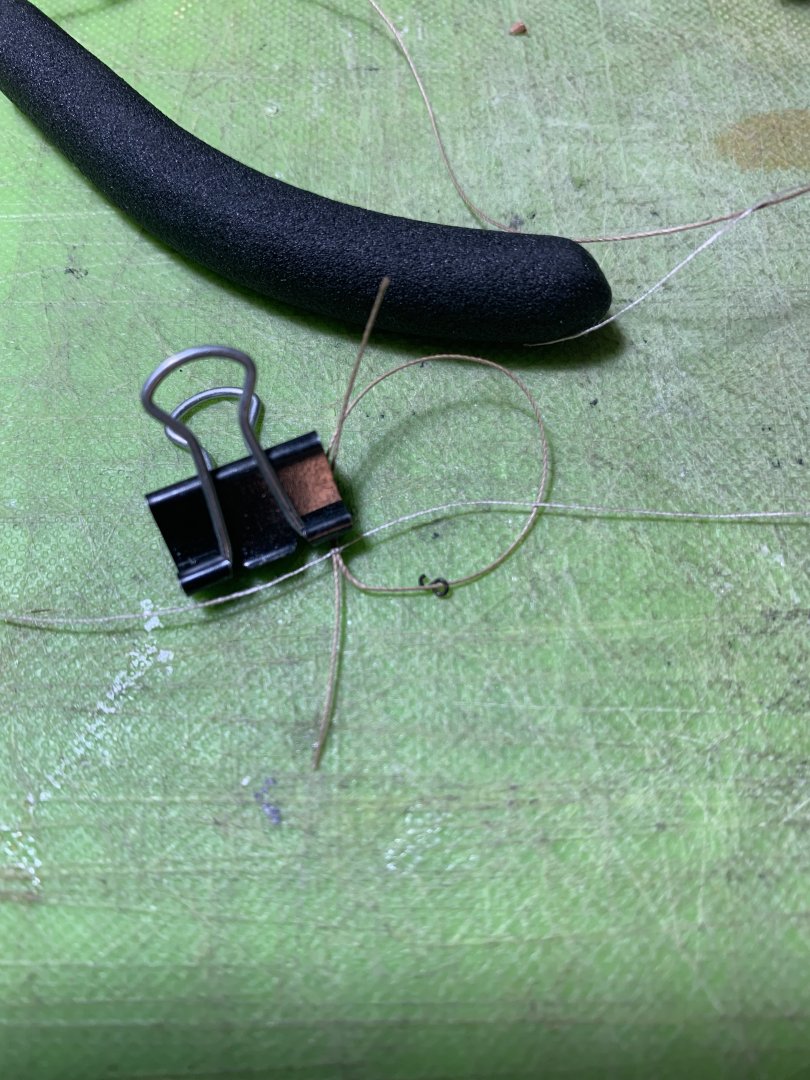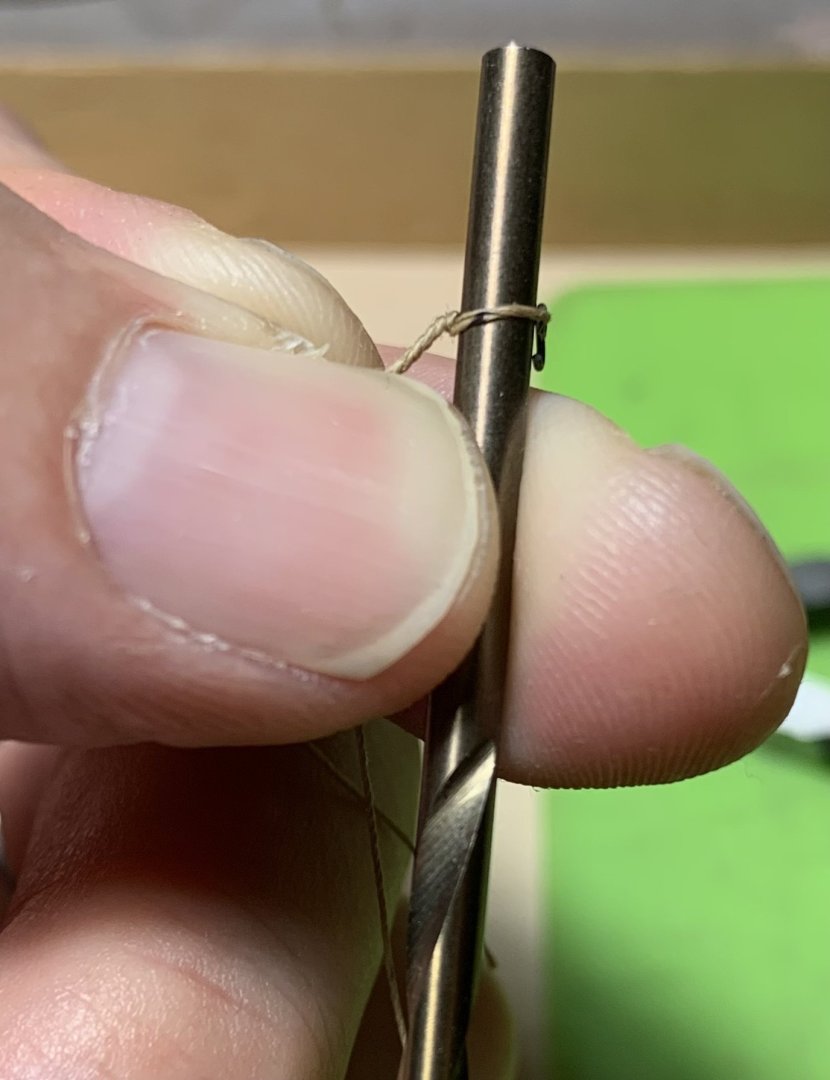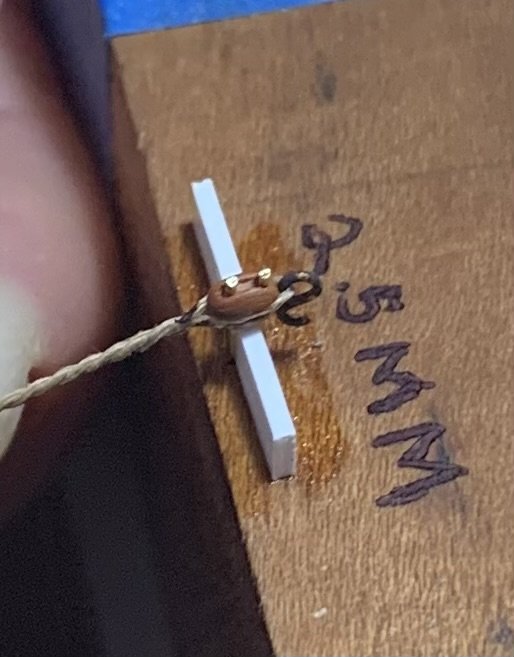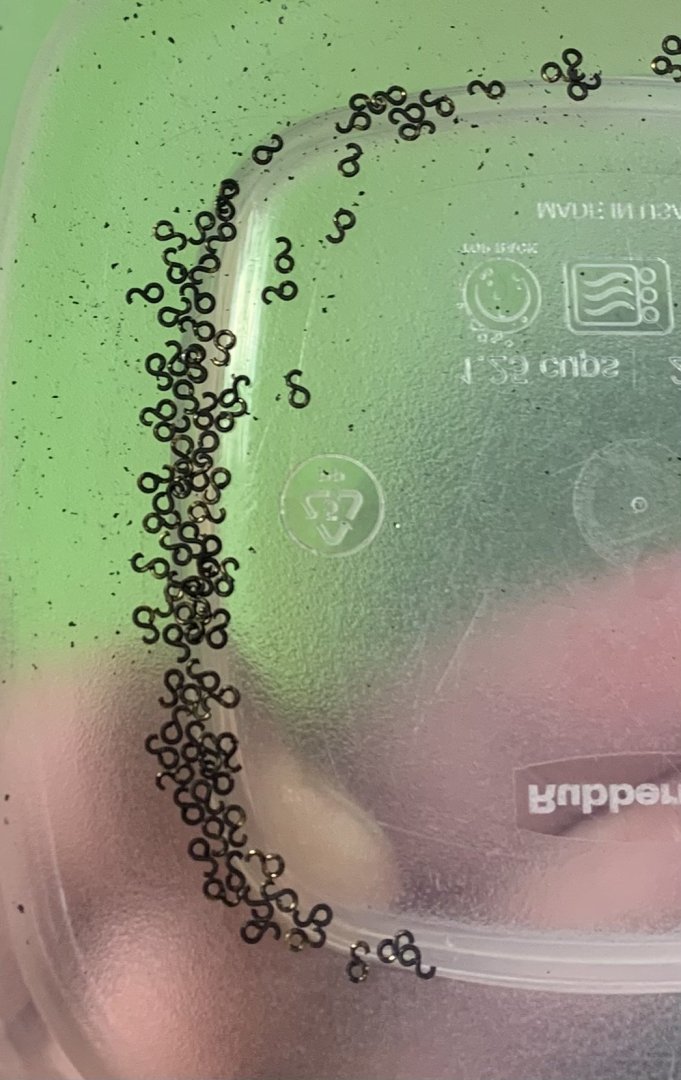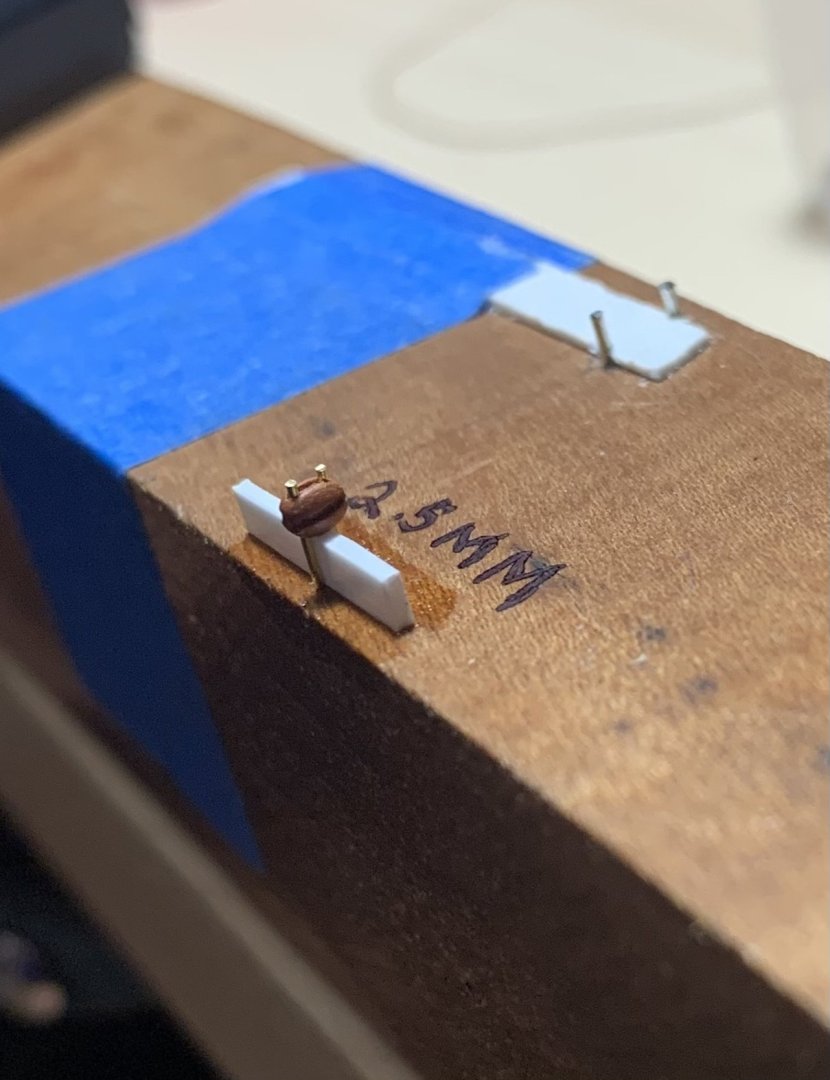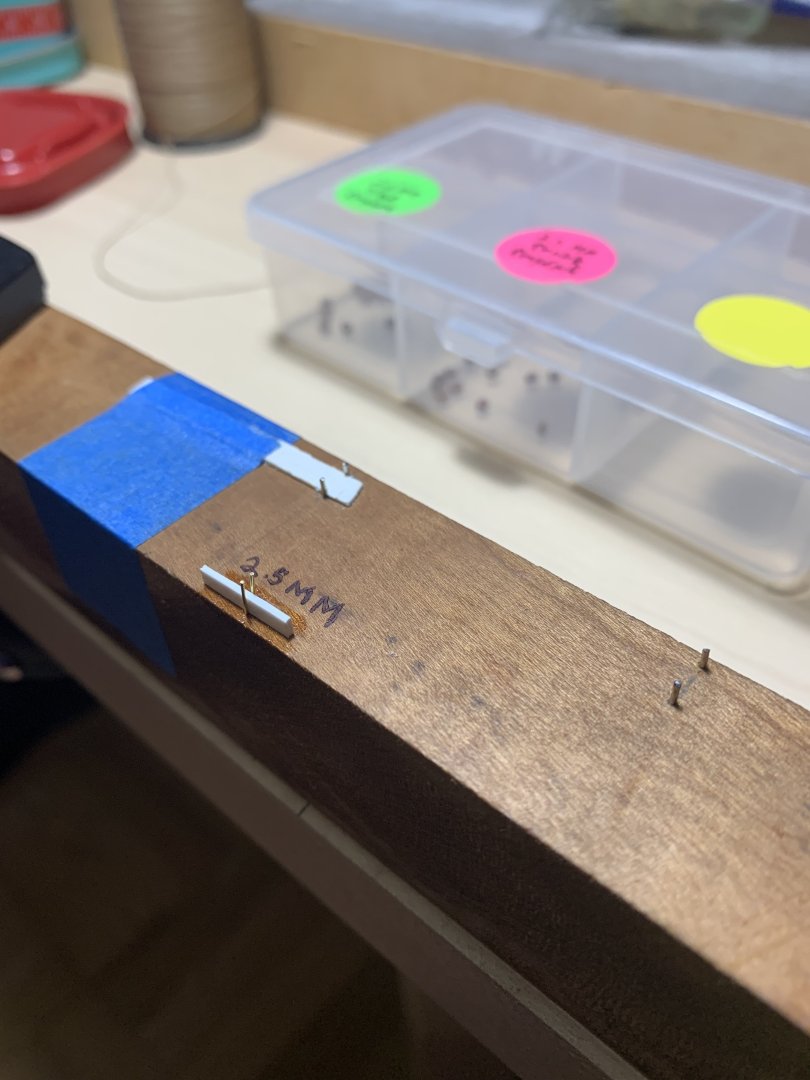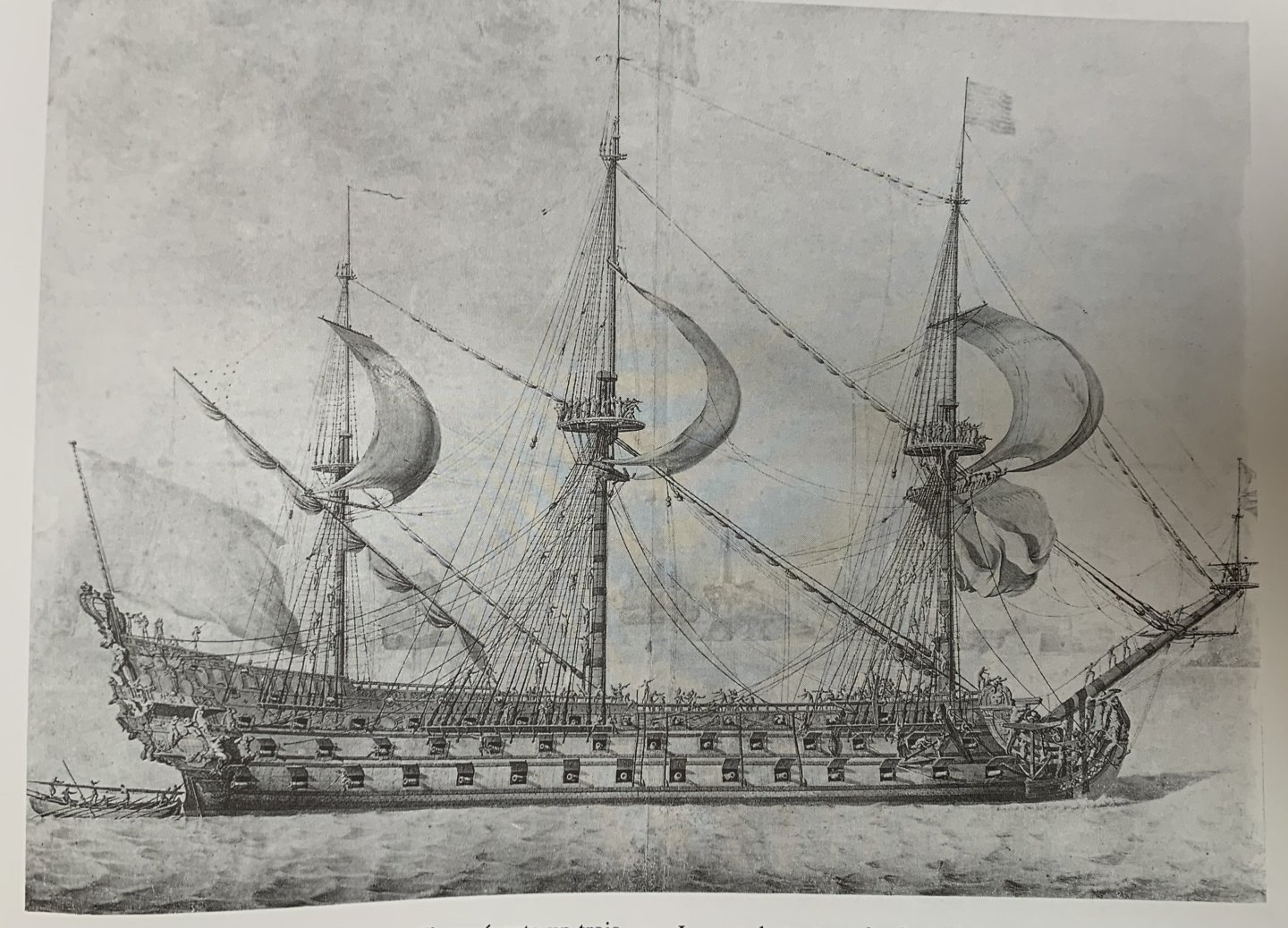-
Posts
3,297 -
Joined
-
Last visited
Content Type
Profiles
Forums
Gallery
Events
Everything posted by Hubac's Historian
-
They also appear in several other VdV portraits from 1672. L’Orgieullieux: Le Terrible (Hubac-built): La Royal Therese:
- 397 replies
-
- soleil royal
- Heller
-
(and 1 more)
Tagged with:
-
Yes, Kevin - you are in for a treat, here. I have found John’s research to be on a par with Guy Maher’s, and his info-graphic presentations are second-to-none. Railroad modelers are also particularly sensitive to nuance and realism. For all of these reasons, this is one of my absolute favorite builds.
- 103 replies
-
- Soleil Royal
- Ship-of-the-line
-
(and 2 more)
Tagged with:
-
Tremendous progress, Eric! It’s fun to see the outline of it all coming into focus.
- 397 replies
-
- soleil royal
- Heller
-
(and 1 more)
Tagged with:
-
Thank you, Bill - that is very nice of you to say!
- 1,508 replies
-
- Le Soleil Royal
- Heller
-
(and 1 more)
Tagged with:
-
No, it’s all manageable. However, Kevin - I understand your compulsions 😁
- 2,697 replies
-
- heller
- soleil royal
-
(and 9 more)
Tagged with:
-
I will add to this that I wish I had done what John Ott did on his brilliant and on-going build, which was to continue the hull planking past the beakhead bulkhead in a descending arc. This is true to actual practice, and the turret toilets don’t appear until significantly later in the early 18th C.
- 1,508 replies
-
- Le Soleil Royal
- Heller
-
(and 1 more)
Tagged with:
-
I generally agree with the accuracy assessment. I think you will see, though, that when it comes to the lower transom and fully seating home the upper bulwarks, there is quite a bit of fiddling around that needs to happen, in order to get the best joint possible.
- 2,697 replies
-
- heller
- soleil royal
-
(and 9 more)
Tagged with:
-
Well, I’m happy to report that I finally found success with the JAX. Across both forums, I’ve gotten a lot of really good advice. One friend recommended rinsing with common white vinegar, then water. I had that laying around, so I first used an old toothbrush to scale off any loose oxidation into a paper towel. I water rinsed to get rid of debris. Then, I let them sit in full-strength vinegar for about 10 minutes. I swirled the container for good measure. Then, a final water rinse X2. According to one friend, the key to success whether it is Birchwood or JAX is to dilute the solution; Paul suggested a 1:10 solution of blackening agent to water. With a medicine dropper, I measured out 10 drops of tap water, followed by 1, then 2, and finally 3 drops of the JAX. The color change was gradual over a five minute period. I left it for 10 minutes, and the color wasn’t seeming to get any darker, but it was plenty dark enough. Unlike before, there was no accumulation of oxidative debris in the solution. The parts didn’t look crusty. I rinsed with water and left them out on a paper towel to dry. Voila! I can handle them. The color doesn’t rub off. It seems as though the key difference is that full-strength solution attacks the metal too aggressively, producing this loose, scaley oxidation.
- 2,697 replies
-
- heller
- soleil royal
-
(and 9 more)
Tagged with:
-
Good tips from all. Kevin - I think I’ve managed to avoid flat spots because I’m wrapping and stretching around the pin beyond the ultimate cut point. This way, there is no spring-back in the wire.
- 2,697 replies
-
- heller
- soleil royal
-
(and 9 more)
Tagged with:
-
Basically, yes - just two pins spaced just far enough for the wire to pass through. I cut the wire into 5/8” segments, and I turn up each end with a pair of parallel pliers to form “handles”. With the wire between the pins, I hand twist both ends in one direction. Then I use the pliers to grab hold of one end, and I bring that end up, over and through the pins. I pull hard past the pin and down, so that I get a tight loop. The other end gets wrapped tight and crimped around the second pin. It looks like a figure-8, when you take it off the pins. The hook end is easy enough to gauge and nip. The loop end takes a little practice to get that exact intersecting spot consistently. Lastly, I press the hook flat between the parallel pliers. If I needed 75, I made 100 to choose from. So you’re saying that even with a properly cleaned surface, the Birchwood blackening solution has to sit for an hour or two? I had stripped the wire coating with 99% pure acetone. The Jax started blackening instantly - so much so that it was creating debris in the solution. I thought if I left it for any real amount of time, it would just dissolve the wire. I’ll have to head over to BLICK and pick up one of those acrylic pens. Is there a particular brand you recommend?
- 2,697 replies
-
- heller
- soleil royal
-
(and 9 more)
Tagged with:
-
Haha - thanks, Bill! The manicure beauty pageant ends at the hands I guess. Years of soccer and basketball have turned my feet and toenails into a horror show 😀
- 2,697 replies
-
- heller
- soleil royal
-
(and 9 more)
Tagged with:
-
Kevin - congrats on your pending retirement! I am a little envious of you guys. Bill, after working your whole life and raising a family, there is no such thing as “too much time in the shipyard.” Maurice is a really talented guy. What he did with that Heller 74 is astounding, and his wooden builds have also been top-notch! His sails, for me, were just pure magic. I spent the better part of yesterday’s free time digging through Dafi’s Victory log for better insight into how to convincingly rig carriage tackles in 1:96. As usual, Daniel did not disappoint! I modified some of his approach to suit my objective. I had made up a bunch of hooks that are as small as I can muster at just about 2.5 MM, matching the single and double blocks that I’m using for these 16 visible main deck guns. I used the brass wire again, but this time I both stripped the coating and abraded the surface with a grey Scotch-Brite pad. I was hoping to not have to paint these hooks, and this time the JAX blackened the lot fairly immediately: Nevertheless, the oxidation does not seem very resilient to handling. It looks like I’ll be swiping these with a little black paint before installation, anyway. I wonder whether the Birchwood Casey brass black is just a better product for this application. I see a lot of guys using it with great and instantaneous results. Later in the evening, I set to work designing a process to strap the single blocks with a hook, while also attaching the lanyard to the block strap with an eyelet. I was aiming to minimize any unnecessary bulk from overhand knots. For the sake of experimentation, I used some common polyester line that pretty closely matches the .35 mm laid line that I will use for the block straps. I only bought a little of this line from Ropes of Scale, for the time being, to get me started. I’ll have to see what it looks like, but I think I will use the common thread for the lanyards and their flaked coils, and the laid line on the straps where that difference is more apparent. I made a simple pin jig that will elevate and hold both the single and double blocks for strapping. I wanted to get a sense for the circumference around the single blocks, so that I would know what size drill bit to use as a mandrel for pre-setting the strap opening. I marked the test line with a pen: It turns out that an 1/8” drill bit leaves enough slack that I can do a short seizing close to the base of the hook: After thinking this process through a little further, it dawned on me that the way to approach this is to simply create that short seizing around the hook, first, with my .007 linen line. Then, make an oversize throat seizing of a single-overhand knot X2, on the backside of the strap. Before placing the strap back over the mandrel, make a loose eyelet for the lanyard, around the back end of the strap. With the strap over the mandrel, you can now pull the strap ends taught around the mandrel. After slipping your strap/lanyard assembly off the mandrel, you can now tack the hook end onto the “out” end of the block with a dot of CA. Once that sets, you can now cinch the strap tight into the groove of the block. Following that you can push the simple seize of the lanyard into a tight eyelet around the “in” end of the block. I use Kirrill’s technique of alternating, single overhand knots to walk out a 4-wrap simple seizing. All of this will be fixed with dilute white glue before snipping off the loose ends. A photo montage of my process: Now, my argument for not using expensive laid line for the lanyard is that there will be so little visible space between the single and double blocks. I did a few visual checks to see how far in-board I could place the carriages before the outboard portion of the gun barrels looked too short, relative to the middle and lower batteries: This is about the limit of what’s reasonable: The depth of these two lower batteries is pretty well fixed as these barrels plug into pre-established dummy blocks on the lower decks. This looks reasonable to me. As I embark on this process of gun rigging, it is immediately apparent to me why builders shy away from these huge 100-gunners, and I’m only rigging a small fraction if those guns! Thank you for looking in. More to follow.. Best, Marc
- 2,697 replies
-
- heller
- soleil royal
-
(and 9 more)
Tagged with:
-
Hi Kevin - Yes, I was following Bruma’s Cutty Sark, and I have commented on the excellence of his sails. They truly are great. My first inclination, though, is to try a technique with silk span that I first saw on a build by Blue Ensign - his Heller kitbash of La Superb. Silkspan seems to give the right scale impression for 1:96. If I’m being a little over-critical, I find that the material Bruma used felt a little heavy. His approach may ultimately be necessary, though, to achieve such a deep billowing effect. SR kit prices have been all over the place. If you have an early pressing, you are in luck, as the plastic remains excellent, so long as the kit has not been stored through temperature extremes. As you know, I have a deep respect for your computer modeling skills, and your hand-skills in bringing it all together. Your results are worth whatever wait is necessary. Although I have the Airfix Vasa and Prince in my stash, I am growing doubtful that I will ever get to building them, as I want to begin transitioning to wood on my next project. Why can’t this be my job?
- 2,697 replies
-
- heller
- soleil royal
-
(and 9 more)
Tagged with:
-
Well, Bill, I was thinking today about how much I enjoyed scratch-building the structural and ornamental aspects of the build. At this stage, though, the rigging looks like a steep, uphill climb. The trouble is that I’ve established a standard for the model, and I can’t just do what I’ve done on earlier builds for the rigging. I won’t be happy with that. In this scale, it is not really possible to construct ALL aspects of the rig to full scale practice, but I want it to look like that. Right now, I’m figuring out how best to strap single and double blocks with hooks for my carriage tackles. As you know, the available space to do so is impossibly small. I’m reading through Dafi’s Victory log because he has so many ingenious jigs and work-arounds for creating scale rigging effects. Because I’m so relatively un-skilled at this aspect of model-making, the going is very slow, and I really have to try not to get overwhelmed by the enormity of the task. I know, as with anything else, that I will acquire skill and confidence, and the process will pick up momentum. I find it somewhat helpful to think of each rigging element as a structure, in itself: what is its geometry? what are its component parts? what was it designed to do? On the other hand, if I spend too much time thinking about the finish line, I get an awfully strong desire to box the whole thing up and start a new project. I have too much time invested to not see it through, though. I keep the fire alive thinking about these fantastically billowing topsails that I will eventually try to re-create: This Puget portrait of the Royal Louis is the original inspiration for this diorama, and this version of the RL, circa 1692, is strongly analogous to what SR 1689 would have looked like. One foot in front of the other. Just keep on going, as I am telling my kids all of the time. As ever, I am grateful for the help and support of the community.
- 2,697 replies
-
- heller
- soleil royal
-
(and 9 more)
Tagged with:
-
That is an excellent tip, David - thank you!
- 2,697 replies
-
- heller
- soleil royal
-
(and 9 more)
Tagged with:
-
I’ve invested my hopes and dreams in my best pair of tweezers. I’ll keep you posted!
- 2,697 replies
-
- heller
- soleil royal
-
(and 9 more)
Tagged with:
-
That is very kind of you to say, Mark - much appreciated!
- 2,697 replies
-
- heller
- soleil royal
-
(and 9 more)
Tagged with:
-
Makes sense - the deadeye lashings enable you to tighten the shrouds, as needed.
- 323 replies
-
- Sovereign of the Seas
- Airfix
-
(and 1 more)
Tagged with:
About us
Modelshipworld - Advancing Ship Modeling through Research
SSL Secured
Your security is important for us so this Website is SSL-Secured
NRG Mailing Address
Nautical Research Guild
237 South Lincoln Street
Westmont IL, 60559-1917
Model Ship World ® and the MSW logo are Registered Trademarks, and belong to the Nautical Research Guild (United States Patent and Trademark Office: No. 6,929,264 & No. 6,929,274, registered Dec. 20, 2022)
Helpful Links
About the NRG
If you enjoy building ship models that are historically accurate as well as beautiful, then The Nautical Research Guild (NRG) is just right for you.
The Guild is a non-profit educational organization whose mission is to “Advance Ship Modeling Through Research”. We provide support to our members in their efforts to raise the quality of their model ships.
The Nautical Research Guild has published our world-renowned quarterly magazine, The Nautical Research Journal, since 1955. The pages of the Journal are full of articles by accomplished ship modelers who show you how they create those exquisite details on their models, and by maritime historians who show you the correct details to build. The Journal is available in both print and digital editions. Go to the NRG web site (www.thenrg.org) to download a complimentary digital copy of the Journal. The NRG also publishes plan sets, books and compilations of back issues of the Journal and the former Ships in Scale and Model Ship Builder magazines.






